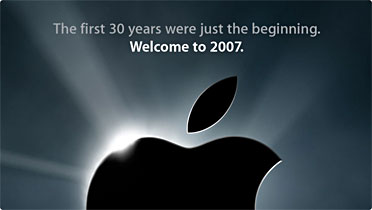iPhone: Questionable Origins?
 I just saw the Engadget story that reveals that the iPhone looks kind of identical to LG KE850. This is disappointing to us Apple admirers but it's most likely a coincidence. Jonathan Ive (iconic Apple designer) isn't someone who needs inspiration from someplace else. Besides, the shape isn't so distinct that you can conclusively call it a knock-off.
I just saw the Engadget story that reveals that the iPhone looks kind of identical to LG KE850. This is disappointing to us Apple admirers but it's most likely a coincidence. Jonathan Ive (iconic Apple designer) isn't someone who needs inspiration from someplace else. Besides, the shape isn't so distinct that you can conclusively call it a knock-off.But that's not all. Looks like even the Multi-Touch interface of iPhone is not new either. This time it's Taiwanese manufacturer FIC whose GTA001 Linux Smart Phone, introduced last November, sports an almost identical interface. It's uncanny.



FIC's GTA001
The Multi-Touch interface described here is eerily similar to the iPhone though it's not entirely identical.
[...] they envisage a system where lists can be scrolled with two fingers and options selected with one; maps that can be zoomed using a pinching motion and panned by twisting fingers around as if holding a compass.
Other features of GTA001 remind us of the iPhone as well.
- Large high resolution screen (2.8-inch 480×640)
- Powerful OS - Linux in this case
- GSM phone
- An "iPod-quality mp3 player"
- Full-screen, button-less interface
I'm still inclined to give the benefit of doubt to Apple though. For one, they couldn't have managed to create a knock-off so soon even though we now know how secretive Apple was during the iPhone development. The GTA came out only in November last year.
Second, Multi-Touch Interface is not a new invention. It has been worked on since the 80's according to Jeff Han, a NYU researcher who demoed a number of applications of Multi-Touch interface at TED last year. So keeping that in mind, I'll pass this one as a freak co-incidence too. However, others might not be so generous. I can foresee Apple getting some flak for this.
It is well known that Apple "picked up" the Graphic User Interface and the mouse, both inventions it calls its own, from Xerox PARC. So even though it's most likely that both the design and the interface of iPhone were developed at Apple, the company's history seems to be catching up with it.
Past iPhone stories from this blog
Steve Jobs' iPhone: What's the Big Deal?
iPhone: Apple's Most Profitable Product Ever?



